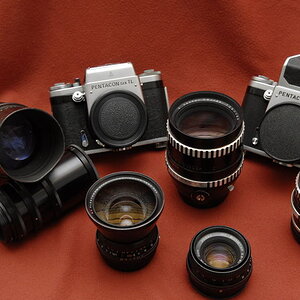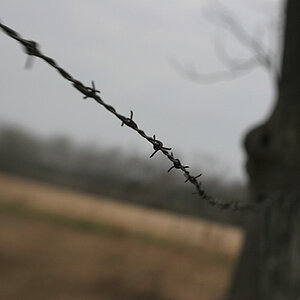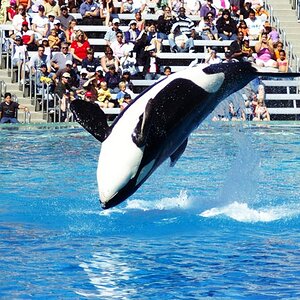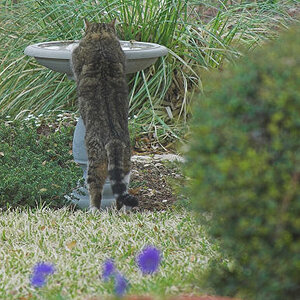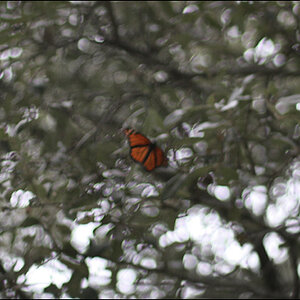Navigation
Install the app
How to install the app on iOS
Follow along with the video below to see how to install our site as a web app on your home screen.

Note: This feature currently requires accessing the site using the built-in Safari browser.
More options
You are using an out of date browser. It may not display this or other websites correctly.
You should upgrade or use an alternative browser.
You should upgrade or use an alternative browser.
Polaroid Type 55 P/N
- Thread starter Jamie R
- Start date
- Joined
- Sep 2, 2003
- Messages
- 34,544
- Reaction score
- 7,570
- Location
- In the mental ward of this forum
- Can others edit my Photos
- Photos NOT OK to edit
Hi Jamie! I have an outdated box of it stashed in the studio somewhere that I'm dying to play with, but haven't used it yet. I'm smitten with the look of this film and already have a few projects I want to try. 
I pulled this from the Polaroid site because I'll need this info myself when I do find time to play. Hope this helps!
I pulled this from the Polaroid site because I'll need this info myself when I do find time to play. Hope this helps!
After clearing the negative, wash it with running water at room temperature for about 5 minutes. For a more stable negative, rinse slightly longer than you would for a conventional negative. After washing, dip the negative in a Photo-Flow (1:600) solution and hang to dry. For optimal storage of the negative, use a glassine envelope.
To prevent scratches -- Negative scratch resistance can be improved by treating the processed negative (after clearing in water and sodium sulfite) with the hardener solution that comes with Kodak Rapid Fix for 2 minutes. The negative should be immersed in the hardener solution only, not the fixer (sodium thiosulfite) portion.
Hi Terri,
This is what I've been doing, although I guess what is causing the scratches is probably related to the negative portion and the paper brushing against each other when I return the unexposed print to contact the negative.
Washing after clearing is more challenging: 2 hours away from civilisation, the nearest water is going to be a stream which isn't on.
Do be careful with expired film: I had a box of expired film which I used, and it was mostly congealed with alkali leaking out of the sides. It got very messy and seemed to create even more on the holder!
Thanks for the link too.
This is what I've been doing, although I guess what is causing the scratches is probably related to the negative portion and the paper brushing against each other when I return the unexposed print to contact the negative.
Washing after clearing is more challenging: 2 hours away from civilisation, the nearest water is going to be a stream which isn't on.
Do be careful with expired film: I had a box of expired film which I used, and it was mostly congealed with alkali leaking out of the sides. It got very messy and seemed to create even more on the holder!
Thanks for the link too.
- Joined
- Sep 2, 2003
- Messages
- 34,544
- Reaction score
- 7,570
- Location
- In the mental ward of this forum
- Can others edit my Photos
- Photos NOT OK to edit
Yep, using expired film is always a crap shoot. I got this box for free, so, considering the cost of this stuff, it helps to know I can't really *ruin* anything. I just need to stick my toe into the P/N waters and get the feel of it. 
Terri -
I wonder if this expired stuff would be a good idea to start trying to 'develop' the neg portion of the 55P/N in a wet solution dev. stop and fixer like other films. Would the quality be better than the jelly developer which the P/N comes in?
Worth a shot maybe?!
I wonder if this expired stuff would be a good idea to start trying to 'develop' the neg portion of the 55P/N in a wet solution dev. stop and fixer like other films. Would the quality be better than the jelly developer which the P/N comes in?
Worth a shot maybe?!
- Joined
- Sep 2, 2003
- Messages
- 34,544
- Reaction score
- 7,570
- Location
- In the mental ward of this forum
- Can others edit my Photos
- Photos NOT OK to edit
Jamie R said:Terri -
I wonder if this expired stuff would be a good idea to start trying to 'develop' the neg portion of the 55P/N in a wet solution dev. stop and fixer like other films. Would the quality be better than the jelly developer which the P/N comes in?
Worth a shot maybe?!
That sounds kind of like what my husband has been suggesting for a setup. We just need to get everything assembled and do some more reading before we do it. He hasn't worked with this stuff in a long time and of course I'm as green as grass!

I'd love to know what your results are like Terri.
If Polaroid 55P/N is Panatomic X, then the times for development should be widely available on the net. My main prob. is, I can't wait that long to develop - I want instant gratification like a digital camera user, with results in less than 30 seconds.
Actually, 55 P/N is faster than digital imaging in terms of print output
If Polaroid 55P/N is Panatomic X, then the times for development should be widely available on the net. My main prob. is, I can't wait that long to develop - I want instant gratification like a digital camera user, with results in less than 30 seconds.
Actually, 55 P/N is faster than digital imaging in terms of print output
- Joined
- Sep 2, 2003
- Messages
- 34,544
- Reaction score
- 7,570
- Location
- In the mental ward of this forum
- Can others edit my Photos
- Photos NOT OK to edit
But it is considered an instant film, isn't it? Again, check out what I've read at the Polaroid site:
Mind you, I haven't tried any of this, but was kind of using this table as a starting point.
With proper processing and clearing, Type 55 negatives are every bit as stable as conventional negatives.
Development time and temperature are critical. At 70° F and above, the recommended processing time is 20 seconds. If in doubt about the actual temperature, it's better to overdevelop than underdevelop. Ordinarily, extending the processing time slightly will have little effect on image quality. On the other hand, underdevelopment may cause solarization in areas of minimum density.
--------------------------------------------------------------------------------
Processing Information -- for best results, process at temperatures above 60°F (16°C).
Temperature Processing Time F/stop
Exposure Adjustment
75°+ F (24°+ C) 20 seconds none
70°+ F (21°+ C) 20 seconds none
65°+ F (18°+ C) 35 seconds none
55°+ F (13°+ C) 50 seconds none
50°+ F (10°+ C) 60 seconds none
Mind you, I haven't tried any of this, but was kind of using this table as a starting point.
That's absolutely right Terri.
One thing about the mechanism of the P/N film is the draw-return of the print to the neg: I think this causes scratching of the emulsion before I even get to harden it. As I don't tend to go for the print, I'd rather save the negative.
I'm starting to think that dumping the print, and just developing the negative by unloading it into a wet tray in the dark would save it from scratches and give more conventional development in say, rodinal or ID11. It's probably a very expensive way to get a negative, but what a negative!
One thing about the mechanism of the P/N film is the draw-return of the print to the neg: I think this causes scratching of the emulsion before I even get to harden it. As I don't tend to go for the print, I'd rather save the negative.
I'm starting to think that dumping the print, and just developing the negative by unloading it into a wet tray in the dark would save it from scratches and give more conventional development in say, rodinal or ID11. It's probably a very expensive way to get a negative, but what a negative!
- Joined
- Sep 2, 2003
- Messages
- 34,544
- Reaction score
- 7,570
- Location
- In the mental ward of this forum
- Can others edit my Photos
- Photos NOT OK to edit
It's probably a very expensive way to get a negative, but what a negative!
Exactly.
Similar threads
- Replies
- 7
- Views
- 1K
- Replies
- 22
- Views
- 3K
- Replies
- 12
- Views
- 2K


